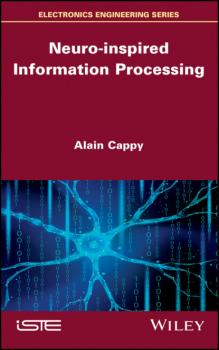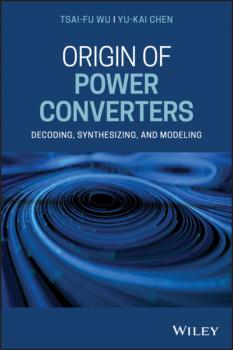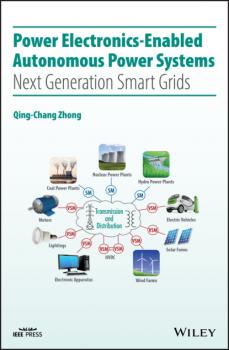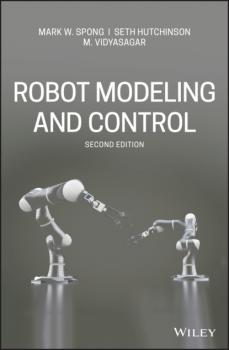ТОП просматриваемых книг сайта:
Техническая литература
Различные книги в жанре Техническая литература, доступные для чтения и скачиванияАннотация
Presents the mathematical framework, technical language, and control systems know-how needed to design, develop, and instrument micro-scale whole-angle gyroscopes This comprehensive reference covers the technical fundamentals, mathematical framework, and common control strategies for degenerate mode gyroscopes, which are used in high-precision navigation applications. It explores various energy loss mechanisms and the effect of structural imperfections, along with requirements for continuous rate integrating gyroscope operation. It also provides information on the fabrication of MEMS whole-angle gyroscopes and the best methods of sustaining oscillations. Whole-Angle Gyroscopes: Challenges and Opportunities begins with a brief overview of the two main types of Coriolis Vibratory Gyroscopes (CVGs): non-degenerate mode gyroscopes and degenerate mode gyroscopes. It then introduces readers to the Foucault Pendulum analogy and a review of MEMS whole angle mode gyroscope development. Chapters cover: dynamics of whole-angle coriolis vibratory gyroscopes; fabrication of whole-angle coriolis vibratory gyroscopes; energy loss mechanisms of coriolis vibratory gyroscopes; and control strategies for whole-angle coriolis vibratory gyro- scopes. The book finishes with a chapter on conventionally machined micro-machined gyroscopes, followed by one on micro-wineglass gyroscopes. In addition, the book: Lowers barrier to entry for aspiring scientists and engineers by providing a solid understanding of the fundamentals and control strategies of degenerate mode gyroscopes Organizes mode-matched mechanical gyroscopes based on three classifications: wine-glass, ring/disk, and mass spring mechanical elements Includes case studies on conventionally micro-machined and 3-D micro-machined gyroscopes Whole-Angle Gyroscopes is an ideal book for researchers, scientists, engineers, and college/graduate students involved in the technology. It will also be of great benefit to engineers in control systems, MEMS production, electronics, and semi-conductors who work with inertial sensors.
Аннотация
A detailed account of various applications and uses of transparent ceramics and the future of the industry In Transparent Ceramics: Materials, Engineering, and Applications , readers will discover the necessary foundation for understanding transparent ceramics (TCs) and the technical and economic factors that determine the overall worth of TCs. This book provides readers with a thorough history of TCs, as well as a detailed account of the materials, engineering and applications of TC in its various forms; fabrication and characterization specifics are also described. With this book, researchers, engineers, and students find a definitive guide to past and present use cases, and a glimpse into the future of TC materials. The book covers a variety of TC topics, including: ● The methods employed for materials produced in a transparent state ● Detailed applications of TCs for use in lasers, IR domes, armor-windows, and various medical prosthetics ● A review of traditionally used transparent materials that highlights the benefits of TCs ● Theoretical science and engineering theories presented in correlation with learned data ● A look at past, present, and future use-cases of TCs This insightful guide to ceramics that can be fabricated into bulk transparent parts will serve as a must-read for professionals in the industry, as well as students looking to gain a more thorough understanding of the field.
Аннотация
With the end of Moore's law and the emergence of new application needs such as those of the Internet of Things (IoT) or artificial intelligence (AI), neuro-inspired, or neuromorphic, information processing is attracting more and more attention from the scientific community. Its principle is to emulate in a simplified way the formidable machine to process information which is the brain, with neurons and artificial synapses organized in network. These networks can be software – and therefore implemented in the form of a computer program – but also hardware and produced by nanoelectronic circuits. The 'material' path allows very low energy consumption, and the possibility of faithfully reproducing the shape and dynamics of the action potentials of living neurons (biomimetic approach) or even being up to a thousand times faster (high frequency approach). This path is promising and welcomed by the major manufacturers of nanoelectronics, as circuits can now today integrate several million neurons and artificial synapses.
Аннотация
A comprehensive guide to approaches to decoding, synthesizing and modeling pulse width modulation (PWM) converters Origin of Power Converters explores the original converter and provides a systematic examination of the development and modeling of power converters based on decoding and synthesizing approaches. The authors—noted experts on the topic—present an introduction to the origins of the converter and detail the fundamentals related to power the converter’s evolution. They cover a range of converter synthesis approaches, synthesis of multi-stage/multi-level converters, extension of hard-switching converters to soft-switching ones, and determination of switch-voltage stresses in the converters. In later chapters, this comprehensive resource reviews conventional two-port network theory and the state-space averaged (SSA) modeling approach, from which systematic modeling approaches are based on the graft switch technique. In addition, the book reviews the converter layer scheme and some fundamental circuit theories. This important book: • Contains a review of several typical transfer codes, such as step-down, step-up, step-up&-down, and ± step-up&-down • Describes the syntheses of pulse width modulation (PWM) converters such as voltage-fed z-source, current-fed z-source, quasi z-source, switched capacitor, and switched inductor converters • Presents two application examples based on previously proposed modeling approaches Written for academic researchers, graduate students, and seniors in power electronics, Origin of Power Converters provides a comprehensive understanding of the evolution of the converter and its applications.
Аннотация
The book is a comprehensive treatment of the subject covering a wide range of subjects uniquely available in a single source for the first time. A material science approach has been adopted in dealing with wood adhesion and adhesives. The approach of the authors was to bring out hierarchical cellular and porous characteristics of wood with polymeric cell wall structure, along with the associated non-cell wall extractives, which greatly influence the interaction of wood substrate with polymeric adhesives in a very unique manner not existent in the case of other adherends. Environmental aspects, in particular formaldehyde emission from adhesive bonded wood products, has been included. A significant feature of the book is the inclusion of polymeric matrix materials for wood polymer composites.
Аннотация
Power systems worldwide are going through a paradigm shift from centralized generation to distributed generation. This book presents the SYNDEM (i.e., synchronized and democratized) grid architecture and its technical routes to harmonize the integration of renewable energy sources, electric vehicles, storage systems, and flexible loads, with the synchronization mechanism of synchronous machines, to enable autonomous operation of power systems, and to promote energy freedom. This is <i>a game changer for the grid. It is the sort of breakthrough – like the touch screen in smart phones – that helps to push an industry from one era to the next,</i> as reported by Keith Schneider, a New York Times correspondent since 1982. This book contains an introductory chapter and additional 24 chapters in five parts: Theoretical Framework, First-Generation VSM (virtual synchronous machines), Second-Generation VSM, Third-Generation VSM, and Case Studies. Most of the chapters include experimental results. <br /><br />As the first book of its kind for power electronics-enabled autonomous power systems, it <br /><br />• introduces a holistic architecture applicable to both large and small power systems, including aircraft power systems, ship power systems, microgrids, and supergrids <br />• provides latest research to address the unprecedented challenges faced by power systems and to enhance grid stability, reliability, security, resiliency, and sustainability <br />• demonstrates how future power systems achieve harmonious interaction, prevent local faults from cascading into wide-area blackouts, and operate autonomously with minimized cyber-attacks <br />• highlights the significance of the SYNDEM concept for power systems and beyond <br /><br /><i>Power Electronics-Enabled Autonomous Power Systems</i> is an excellent book for researchers, engineers, and students involved in energy and power systems, electrical and control engineering, and power electronics. The SYNDEM theoretical framework chapter is also suitable for policy makers, legislators, entrepreneurs, commissioners of utility commissions, energy and environmental agency staff, utility personnel, investors, consultants, and attorneys.
Аннотация
A comprehensive guide to antenna design, manufacturing processes, antenna integration, and packaging Antenna-in-Package Technology and Applications contains an introduction to the history of AiP technology. It explores antennas and packages, thermal analysis and design, as well as measurement setups and methods for AiP technology. The authors—well-known experts on the topic—explain why microstrip patch antennas are the most popular and describe the myriad constraints of packaging, such as electrical performance, thermo-mechanical reliability, compactness, manufacturability, and cost. The book includes information on how the choice of interconnects is governed by JEDEC for automatic assembly and describes low-temperature co-fired ceramic, high-density interconnects, fan-out wafer level packaging–based AiP, and 3D-printing-based AiP. The book includes a detailed discussion of the surface laminar circuit–based AiP designs for large-scale mm-wave phased arrays for 94-GHz imagers and 28-GHz 5G New Radios. Additionally, the book includes information on 3D AiP for sensor nodes, near-field wireless power transfer, and IoT applications. This important book: • Includes a brief history of antenna-in-package technology • Describes package structures widely used in AiP, such as ball grid array (BGA) and quad flat no-leads (QFN) • Explores the concepts, materials and processes, designs, and verifications with special consideration for excellent electrical, mechanical, and thermal performance Written for students in electrical engineering, professors, researchers, and RF engineers, Antenna-in-Package Technology and Applications offers a guide to material selection for antennas and packages, antenna design with manufacturing processes and packaging constraints, antenna integration, and packaging.
Аннотация
A New Edition Featuring Case Studies and Examples of the Fundamentals of Robot Kinematics, Dynamics, and Control In the 2nd Edition of Robot Modeling and Control , students will cover the theoretical fundamentals and the latest technological advances in robot kinematics. With so much advancement in technology, from robotics to motion planning, society can implement more powerful and dynamic algorithms than ever before. This in-depth reference guide educates readers in four distinct parts; the first two serve as a guide to the fundamentals of robotics and motion control, while the last two dive more in-depth into control theory and nonlinear system analysis. With the new edition, readers gain access to new case studies and thoroughly researched information covering topics such as: ● Motion-planning, collision avoidance, trajectory optimization, and control of robots ● Popular topics within the robotics industry and how they apply to various technologies ● An expanded set of examples, simulations, problems, and case studies ● Open-ended suggestions for students to apply the knowledge to real-life situations A four-part reference essential for both undergraduate and graduate students, Robot Modeling and Control serves as a foundation for a solid education in robotics and motion planning.
Аннотация
Wireless Connectivity: An Intuitive and Fundamental Guide Wireless connectivity has become an indispensable part, a commodity associated with the way we work and play. The latest developments, the 5G, next-generation Wi-Fi and Internet of Things connectivity, are the key enablers for widespread digitalization of practically all industries and public sector segments. This immense development within the last three decades have been accompanied by a large number of ideas, articles, patents, and even myths. This book introduces the most important ideas and concepts in wireless connectivity and discusses how these are interconnected, whilst the mathematical content is kept minimal. The book does not follow the established, linear structure in which one starts from the propagation and channels and then climbs up the protocol layers. The structure is, rather, nonlinear, in an attempt to follow the intuition used when one creates a new technology to solve a certain problem. The target audience is: Students in electronics, communication, and networking Wireless engineers that are specialized in one area, but want to know how the whole system works, without going through all the details and math Computer scientists that want to understand the fundamentals of wireless connectivity, the requirements and, most importantly, the limitations Engineers in energy systems, logistics, transport and other vertical sectors that are increasingly reliant on wireless technology
Аннотация
Summarizes the analysis and design of today’s gas heat engine cycles This book offers readers comprehensive coverage of heat engine cycles. From ideal (theoretical) cycles to practical cycles and real cycles, it gradually increases in degree of complexity so that newcomers can learn and advance at a logical pace, and so instructors can tailor their courses toward each class level. To facilitate the transition from one type of cycle to another, it offers readers additional material covering fundamental engineering science principles in mechanics, fluid mechanics, thermodynamics, and thermochemistry. Fundamentals of Heat Engines: Reciprocating and Gas Turbine Internal-Combustion Engines begins with a review of some fundamental principles of engineering science, before covering a wide range of topics on thermochemistry. It next discusses theoretical aspects of the reciprocating piston engine, starting with simple air-standard cycles, followed by theoretical cycles of forced induction engines, and ending with more realistic cycles that can be used to predict engine performance as a first approximation. Lastly, the book looks at gas turbines and covers cycles with gradually increasing complexity to end with realistic engine design-point and off-design calculations methods. Covers two main heat engines in one single reference Teaches heat engine fundamentals as well as advanced topics Includes comprehensive thermodynamic and thermochemistry data Offers customizable content to suit beginner or advanced undergraduate courses and entry-level postgraduate studies in automotive, mechanical, and aerospace degrees Provides representative problems at the end of most chapters, along with a detailed example of piston-engine design-point calculations Features case studies of design-point calculations of gas turbine engines in two chapters Fundamentals of Heat Engines can be adopted for mechanical, aerospace, and automotive engineering courses at different levels and will also benefit engineering professionals in those fields and beyond.










